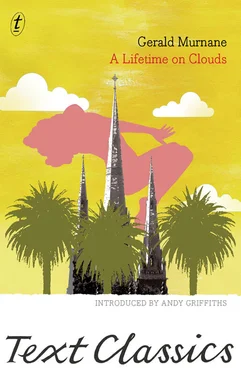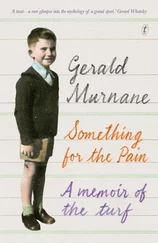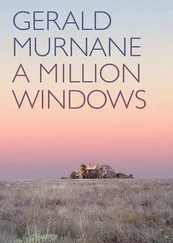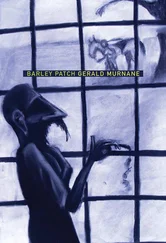Gerald Murnane
A Lifetime on Clouds
Going to America by Andy Griffiths
GERALD Murnane is the author of some of the most original books ever written by an Australian. His first novel, Tamarisk Row , is an obsessive exploration of the imaginative terrain of childhood. His third novel, The Plains , is a meditation on love, landscape and creativity that has an hallucinatory power. The novel that came between these two extraordinary books, A Lifetime on Clouds , has long been out of print. And yet it is, for my money, the funniest and most accessible of all his works. It is also a moving and fearless account of adolescent angst. Murnane’s frank treatment of sexuality, longing, adult hypocrisy, and the guilt and confusion created by a sexually repressive 1950s Catholic boys’ school is as engaging now as when it was first published, in 1976.
The protagonist of A Lifetime on Clouds is the fifteen-year-old schoolboy — and self-confessed sex maniac — Adrian Sherd, who lives in the south-eastern suburbs of Melbourne. By coincidence, in 1976 I was a fifteen-year-old schoolboy living in the south-eastern suburbs of Melbourne and, although I don’t think I qualified as a sex maniac (not compared to Adrian Sherd, at least), I did have a strong interest in the subject.
On my bedroom wall I had a poster of Suzi Quatro wearing a partially unzipped white leather jumpsuit, and I was convinced that if I could find just the right angle I would surely be rewarded with a glimpse of her left breast. I spent a lot of time that year with my cheek pressed against the wall, desperately trying — and failing — to penetrate the mysteries of that jumpsuit.
Fortunately, other sources of raw material for my burgeoning interest in the female form were provided by the lurid covers of my horror comic collection, which often featured partially clothed damsels in distress. And I participated in Church of England Boys’ Society paper drives that exposed me to such racy publications as the ironically named Truth and its steamy Heart Balm letters page, as well as the Sunday Observer , which could be relied on to contain pictures of streakers running across sporting fields or down busy city streets. And if all else failed there was always the bra section of Kmart catalogues, although these were only to be called on in emergencies.
But, despite my considerable efforts, I was a rank amateur when measured against Adrian Sherd, who takes a far more systematic approach to his fantasy life. Every afternoon Adrian sets his model train running across a large, crudely drawn map of the United States. Whichever state it stops in will be the setting for one of his vividly imagined nightly escapades with scores of willing and scantily clad starlets, the inspiration for which he gathers from glimpses of the Hollywood movies his mother does not allow him to watch, the pages of the Argus newspaper, and coveted and difficult-to-obtain magazines such as Man Junior and Health and Sunshine .
Adrian brings an admirable rigour to his trips to America and maintains a strict policy not to allow any of the women he sees in real life into his fantasies. On the one occasion he breaks this self-imposed rule, and issues an imaginary invitation to the ‘piney woods of Georgia’ to a young, ‘carefully groomed’ married woman he sees on the train, he finds he can’t relax.
Whenever he met her eyes he remembered he would have to face her on the train next morning…It would be hard pretending that nothing had happened between them on the previous night.
There was another difficulty. Jayne and Marilyn and Susan and their many friends always had the same look about them — a wide-eyed half-smile with lips slightly parted. The new woman had an irritating way of changing her expression. She seemed to be thinking too much.
One of the many delights of the novel is the contrast between the debauchery of Adrian’s imagined life and the humdrum reality of postwar Melbourne suburbia:
One very hot Saturday morning Adrian Sherd was staring at a picture of the Pacific coast near Big Sur. He hadn’t been to America for several days, and he was planning a sensational extravaganza for that very night with four or perhaps even five women against a backdrop of mighty cliffs and redwood forests.
His mother came into the room and said she had been down to the phone box talking to his Aunt Francie and now Adrian and his brothers and mother and Aunt Francie and her four kids were going on the bus to Mordialloc beach for a picnic.
The pleasures of America pose a dilemma for our insatiable hero who, increasingly terrified and burdened with guilt, attempts to reform himself — Adrian is Catholic, after all, and has been taught that masturbation is a mortal sin. He does this not by abandoning his fantasies but by redoubling his efforts to create an even more elaborate one, in which he courts, marries and raises a family with a good Catholic girl whom he has seen taking communion in church. This fantasy is so gloriously and painstakingly realised that it occupies most of the last half of the novel. Not only does it weaken the starlets’ hold on Adrian’s mind, but it makes the second half of the book possibly even more entertaining — and certainly more earnest and affecting — than the first.
There is much to love in this novel and many passages that are profoundly funny — laugh-out-loud moments which, at the same time, evoke strongly felt and often deeply painful emotions. Throughout, Murnane masterfully maintains a deadpan tone.
For instance, Adrian is angry and disappointed that he and his friends have been cheated by Father Dreyfus’s much-anticipated sex-education film, which the brother promised would show them ‘the moment of fertilisation’. Adrian imagines that, at the very least, this means the film will present them with ‘a statue or a painting of a man and woman doing it’, but instead they are shown a picture of the female reproductive system and an animated image of an ‘army of little sperm men invading the diagram’. ‘The commentator got excited. He thought there was nothing so marvellous as the long journey of these tiny creatures. Adrian didn’t care what happened to the little bastards now that the film had turned out to be a fraud.’
What follows is one of the most shockingly funny images of the entire book and a great example of how Murnane isn’t afraid to go where angels fear to tread. (Okay, it’s on page 130 if you can’t wait.)
Or consider Father Lacey’s speech to Adrian’s class, urging them to avoid non-Catholic newspapers:
‘There’s one Melbourne newspaper in particular that regularly prints suggestive pictures which are quite unnecessary and don’t have anything to do with the news of the day. I won’t name the paper, but some of you have probably noticed what I’m talking about. I hope your parents have, anyway.
‘This very morning for example I happened to notice a picture on one of their inside front pages. It was what they call a sweater girl…
‘I’ll speak quite frankly now. There are many famous and wonderful pictures of the naked female body with the bosom exposed — some of them are priceless treasures in the Vatican itself. But you’ll never find one of these masterpieces drawing attention to the bosom or making it appear larger than it really is.’
And then there are Adrian’s delightfully pompous imaginary lectures to his imaginary wife on their imaginary honeymoon in Triabunna, Tasmania.
‘I won’t beat about the bush, Denise darling. In one sense, what I’m going to do to you tonight may seem no different from what a bull does to his cows or a Hollywood film director does to one of his starlets. (Denise looked startled and puzzled. He would have to explain this point to her later.) It’s not a pretty thing to watch, I’m afraid, but it’s the only way our poor fallen human natures can reproduce themselves. If it seems dirty or even ridiculous to you, I can only ask you to pray that you’ll understand it better as time goes by.’
Читать дальше












